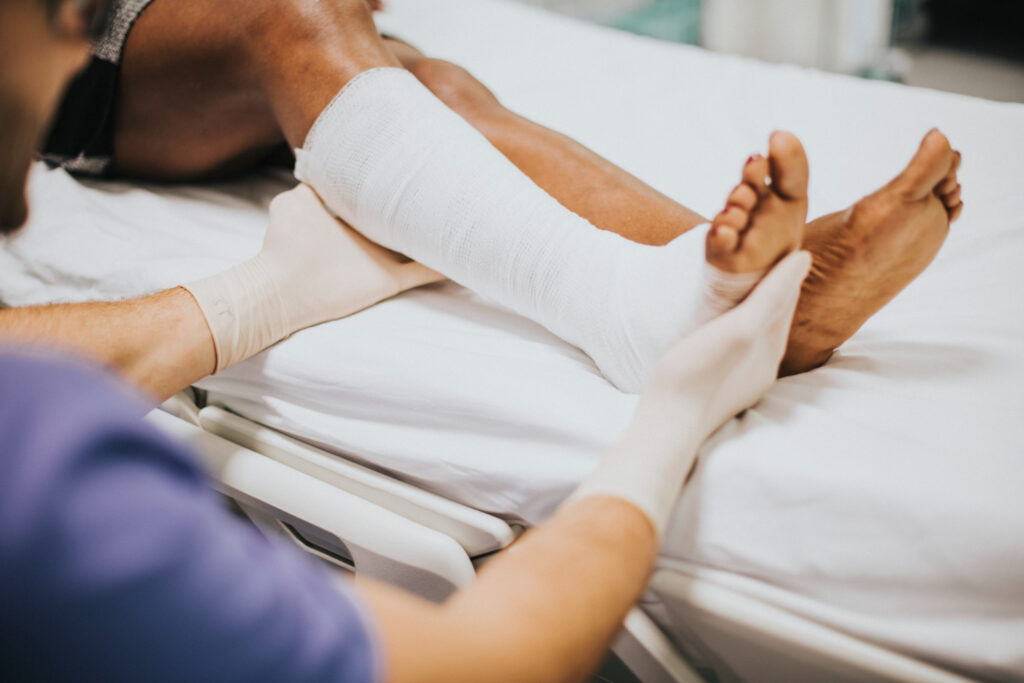Limb Lengthening Surgery Turkey
Getting limb lengthening surgery in Istanbul is a popular option for individuals seeking high-quality treatment at affordable costs. Istanbul offers world-class medical facilities and experienced surgeons, making it an attractive destination for this procedure. Follow these simple steps to plan your surgery and recovery with ease.
Procedure: Limb Lengthening Surgery
Duration: 2 – 4 hours
Length of Stay in Hospital : Few Days
Cost in Turkey: €25,000 – €65,000
Anesthesia: General anesthesia
Success Rate: 95%
Final Results: 9 – 12 months
Scars: Minimal
Pain: Slight
What is Limb Lengthening Surgery?
Limb lengthening surgery is designed to increase the length of bones in the arms or legs. It’s often used to correct discrepancies caused by congenital conditions or injuries, but some choose it for cosmetic reasons. This surgery uses advanced techniques to stimulate bone growth, gradually leading to longer limbs.

Cost of Limb Lengthening Surgery in Turkey
The cost of limb lengthening surgery in Turkey varies widely, typically ranging from €25,000 to €65,000. Several factors influence the overall cost of the procedure:
- Hospital or clinic: The reputation and quality of the facility play a significant role in pricing.
- Surgeon’s experience: Highly experienced surgeons may charge more due to their expertise.
- Type of equipment: Advanced surgical tools and technologies can increase the cost.
- Length of hospital stay: Post-operative care and recovery time affect total expenses.
- Patient’s condition: Personalized treatment plans may incur additional costs based on individual needs.
Ideal Candidate for Limb Lengthening Surgery Turkey
- In good overall health with realistic expectations about the procedure
- Individuals with limb length discrepancies or congenital conditions
- Those seeking height enhancement for cosmetic reasons
- Physically fit to endure surgery and the extended recovery process
- Committed to the rehabilitation and follow-up care required
- Possess healthy bone structure to support proper healing
- No underlying medical conditions that could impede bone regeneration or recovery
Limb Lengthening Surgery Results
Success Rate
Limb lengthening surgery has a success rate of over 95%, making it a reliable option for those seeking to correct limb discrepancies or increase height. Patients typically experience significant improvements in both limb function and appearance.
Patient Satisfaction
Surveys show that the satisfaction rate is around 90%, with many patients reporting enhanced quality of life and confidence after the procedure. Recovery time and final results vary, but most individuals achieve their desired outcomes, particularly following post-surgical rehabilitation guidelines.
Limb Lengthening Surgery Recovery Time
The recovery process after limb lengthening surgery is gradual, requiring patience and commitment. While each patient’s experience may differ slightly, the healing timeline follows predictable stages. Physical therapy and follow-up visits are essential to recovery.
Limb Lengthening Surgery 1 Week Post Op
In the first week after surgery, you will likely experience swelling, bruising, and mild pain, which is normal. The focus will be on managing discomfort and preventing infection. You will begin gentle mobility exercises under the supervision of a physical therapist. Weight-bearing on the affected limb is limited at this stage.
Limb Lengthening Surgery 4 Weeks Post Op
By four weeks post-op, you should see a gradual improvement in movement and reduced pain. Bone distraction (lengthening) typically begins during this period, and you’ll visit the clinic for regular adjustments. Physical therapy continues to improve the range of motion, but you’ll still rely on assistive devices like crutches. X-rays will monitor the bone’s progress.
Limb Lengthening Surgery 3 Months Post Op
At the three-month mark, the bone should be well into the consolidation phase, where it begins to harden and strengthen. Depending on the surgeon’s guidance, you may start to bear some weight on the limb. Most patients report noticeable lengthening results at this point. Continued physical therapy will help restore normal limb function.
Limb Lengthening Surgery 6 Months Post Op
The bone is typically fully consolidated by six months, meaning it has solidified into place. Most patients can walk with minimal support and begin resuming light daily activities. You will continue to undergo periodic X-rays to ensure full healing. Full physical activity may still be restricted, but significant improvements in mobility are expected.
Limb Lengthening Surgery 1 Year Post Op
At one year post-op, most patients fully recover, and the lengthened bone is as strong as the original. You should be able to engage in normal activities without restrictions. Any scarring will have faded, and limb function should be fully restored. Many patients reach their desired limb length and experience lasting benefits by this time. Regular check-ups will confirm complete healing and the success of the surgery.
Types of Limb Lengthening Surgery
Several techniques are used in limb lengthening surgery, each designed for different needs and conditions. The approach depends on the patient’s bone structure, the lengthening goals, and the surgeon’s expertise.
External Fixation
External fixation involves attaching an external device, such as the Ilizarov frame, to the bone using pins or wires. The frame is gradually adjusted to lengthen the bone over time. This method allows precise control during lengthening and is widely used for cosmetic and medical cases. However, diligent care is required to avoid infection at the pin sites.
Internal Lengthening Nail
In this procedure, a magnetically controlled internal rod (or nail) is surgically implanted inside the bone. The rod gradually lengthens using an external magnetic device. This method is less invasive than external fixation, reducing the risk of infection and scarring. Many patients prefer this option due to its faster recovery time and the fact that the device remains inside the body, hidden from view.
Combined Technique
The combined technique uses both internal and external devices to lengthen limbs. It often starts with external fixation to stabilize the bone, followed by the insertion of an internal nail for the lengthening process. This approach allows for the benefits of both methods, offering stability and precision during recovery. It’s typically reserved for complex cases requiring additional support during healing.
How Does the Limb Lengthening Surgery Procedure Work?
Limb lengthening surgery is a multi-step process that requires careful planning, precise surgical intervention, and thorough post-operative care. Here’s what you can expect during each phase.
Consultation
The process begins with a detailed consultation with your surgeon, where you discuss your goals and concerns. During this time, the surgeon will explain the procedure, assess your suitability, and review potential risks. Understanding the patient’s expectations and medical history is crucial to developing a personalized treatment plan.
Medical Test
Before the surgery, you’ll undergo a series of comprehensive medical tests. These tests may include blood work, X-rays, and other imaging studies to assess your overall health and bone structure. The goal is to ensure you are physically fit for the procedure and to identify any underlying conditions that could impact the surgery or recovery process.
Surgery
The surgery itself typically takes several hours and involves cutting the bone (osteotomy) in the limb that will be lengthened. Depending on the chosen method (external or internal devices), the surgeon will apply the appropriate device to begin the gradual bone distraction process. The procedure is performed under general anesthesia, ensuring the patient is comfortable.
Recovery
The recovery phase begins immediately after surgery. You will be monitored closely in the hospital for a few days to manage pain and reduce the risk of complications. Physical therapy is initiated soon after to promote mobility, and you will likely use crutches or other assistive devices during this time. The lengthening process occurs gradually over weeks or months and requires regular device adjustments.
Follow Up
Post-surgery follow-up appointments are essential for monitoring progress. You will visit your surgeon for regular X-rays to ensure the bone is lengthening and healing properly. Any necessary adjustments to the device will be made during these visits, and your progress will be tracked until full recovery is achieved, typically within a year.
Side Effects of Limb Lengthening Surgery
- Pain and discomfort during the lengthening process
- Swelling, bruising, and stiffness in the affected limb
- Infection at pin or screw sites, particularly with external fixation
- Nerve or muscle irritation due to the lengthening process
- Delayed bone healing or non-union of bones
- Joint stiffness or reduced range of motion
- Possible limb misalignment or uneven length
- Risk of blood clots during recovery
- Scarring from surgical incisions or external devices
- Psychological stress due to the prolonged recovery process
How to Get a Limb Lengthening Surgery in Istanbul (Step-by-Step)
Step 1: Research and Choose a Clinic
Begin by researching reputable Istanbul clinics and surgeons specializing in limb lengthening surgery. Look for patient reviews, success rates, and the surgeon’s credentials. It’s important to select a facility that offers high-quality care and has experience in handling international patients.
Step 2: Initial Consultation
Contact your chosen clinic to schedule a virtual or in-person consultation. You’ll discuss your goals, medical history, and treatment options during this session. The surgeon will assess your suitability for the surgery and provide detailed information about the process and expected outcomes.
Step 3: Travel Arrangements
Once your consultation is complete, you must arrange travel to Istanbul, including flights and accommodation. Many clinics offer assistance with travel planning and medical tourism packages, including airport transfers, accommodations, and post-operative care.
Step 4: Pre-Surgery Medical Tests
Upon arrival in Istanbul, you will undergo comprehensive medical tests to confirm your readiness for surgery. These tests may include blood work, imaging, and physical evaluations to ensure you are healthy enough for the procedure.
Step 5: Surgery and Recovery
The surgery will be performed in a state-of-the-art medical facility, followed by a hospital stay for recovery and initial monitoring. After discharge, you’ll receive instructions for managing the lengthening device and continuing physical therapy. Clinics typically provide post-operative support during your stay.
Step 6: Follow-Up Care and Return Home
Once you are medically cleared to travel, you can return home, but you must maintain regular communication with your surgeon for follow-up care. Many clinics offer virtual check-ins to monitor your progress and ensure a smooth recovery.
